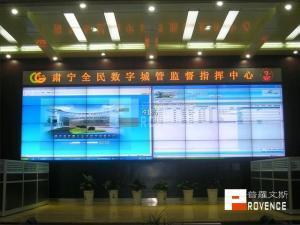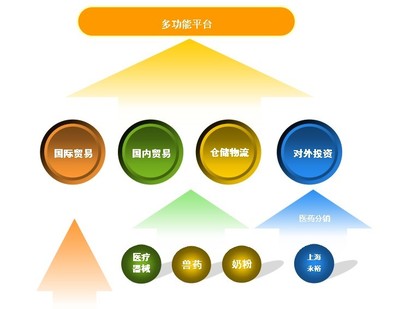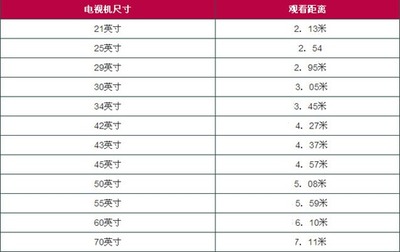What is the Refresh Rate?
What isthis?Update July 2013: We increasedthe marketing level from Warning to Gimmick to better reflect the2013 models. We updated the article accordingly.The refresh rate is the number of frames per second thetelevision can display. Its unit is a Hertz, which is equal to1/second. 120Hz means it can draw 120 images per second.
The refresh rate of televisions is a bit misleading and is mixedwith a few marketing gimmicks. The increased refresh rate (120Hzand higher) was introduced by manufacturers as an indirect way tofind a solution to the motion blur problem of LCDs and LEDs. You will see a motionblur if the image moves faster than what the screen can draw. LCDpanels in the last few years have become really good at reducingthe motion blur. The best measure of motion blur is to calculatethe time a pixel takes to transition from one color to another,also known as the response time. If that time is less than the timebetween the images, no motion blur will be seen because there is nooverlap. There is not a simple and consistent way of measuring thattime; it depends on a lot of factors like the preceding colors.
Manufacturers came up with a great marketing idea: instead ofdrawing only 60 frames per seconds, lets draw 120 frames. This willgive the customer the impression that television can draw imagestwice as fast, thus reducing the motion blur and making thetelevision more fluid. However, this does not guarantee the absenceof overlaps between those images. In fact, the real transition timeof the pixels mostly stayed the same. Additionally, manufacturersare inflating the advertised refresh rate number by adding, forexample, the backlight scan rate like in Samsung's Clear Motion Rate.
A real advantage of a 120Hz and higher refresh rate is toproperly display 24p movies, as described below.
What is a good refresh rate?
As said above, the Refresh Rate is mostly a marketing gimmick.While the 120Hz alone is not worth it, it sometimes comes with abetter panel, which could have a better response time and couldproduce a better image.
This is by no mean a guarantee. In the video, you can see that a60Hz TV (the LG LN5300) and a 120Hz TV (the LG LA6200)have visually the same amount of motion blur.
Therefore, do not look at the refresh rate number unless youwant the motion interpolation option or the 24pplayback.
What is Samsung Clear Motion Rate?
The Clear Motion Rate (CMR) is a made-up number invented bySamsung to qualify how a TV can reduce the appearance of motionblur. The refresh rate alone is not a perfect representation of themotion blur, so they added on top of it the backlight and processorspeed.
While it is true that the refresh rate is not the bestrepresentation of the motion blur, Samsung is misleading thecustomers because it usually only displays the CMR in itsspecifications instead of the real panel refresh rate. Thisinflated number makes the comparison across brands harder todo.
The table below converts Samsung's Clear Motion Rate (CMR) intothe real panel refresh rate, so you can better compare it totelevisions of other brands. The upgrade from a 240 CMR to 480 isnot worth it, because it is still the same actual panel refreshrate of 120 Hz. A Clear Motion Rate of 720, 840 and 960 all havethe same real refresh rate of 240 Hz, so you will not really noticea difference between them in term of movement resolution.
| Real Refresh Rate | Samsung Clear Motion Rate | LG TruMotion | Sony MotionFlow | Vizio SPS | Toshiba ClearScan | Panasonic Backlight Scan |
| 60Hz | 60 120 | 60 | 120 | 120 | 60 | |
| 120Hz | 240 480  600 | 120 | 240 480 | 240 | 120 | 240 720 1920 |
| 240Hz | 720 840 960 1200 | 240 480 | 960 | 240 | 4200 |
| Real Refresh Rate | Samsung Clear Motion Rate | LG Motion Clarity Index | Sony MotionFlow | Panasonic Backlight Scan | Toshiba Active Motion Rate | Philips Perfect Motion Rate |
| 50Hz | 50 100 | 50 100 | 100 | 100 | 50 | 100 200 |
| 100Hz | 200 400 600 | 200 400 | 200 400 | 600 1000 | 100 200 | 400 800 |
| 200Hz | 700 800 1000 | 800 1000 | 800 | 3600 | 400 800 | 1200 |
Does the refresh rate mean the same thing for a LCD, LED andPlasma?
A Plasmascreen has a higher refresh rate because of how it works, so therefresh rate comparison is more important in a LCD/LEDscreen. You will see a lot less motion blur on a Plasma TV than ona LCD or LED, where you can see some on the lower end models.
Advantages of 120Hz and Higher Refresh Rate Televisions
What is Motion Interpolation?
Motion interpolation is a common feature on most 120Hz+televisions. Most media are recorded either at 24 frames per secondor 30 fps. Originally, a 120Hz television would display the sameframe multiple times before switching to the next frame to have theend result of displaying only 24 or 30 frames a second. Thetelevision refresh rate is a lot overkill in that situation, so themanufacturers added a technology that creates new frames in betweenthe original frames. Samsung calls this interpolation technologyAuto Motion Plus, for Sony it is Motion Flow and LG, TruMotion.These new fake frames are an interpolation of the movement of thepicture, making the television footage a lot more fluid.
Not all 120Hz televisions have the motion interpolation feature.For example, the lower end LG model LM4600 does not have thatfeature, even if it is advertised with 120Hz TruMotion.
Motion Interpolation adds fake framesbetween the key framesThe following video compares this effect in slow motion. Notethat you can't see the difference in real time in this videobesides artifacts, because YouTube's frame rate is 30fps thereforecannot represent 120fps footage. However, in slow motion, you canclearly see the added frames as well as the errors the processormakes.
Most people will appreciate the increased fluidity of the video.However, the motion interpolation has 3 main downsides:
What is the Soap Opera Effect?
When watching a movie (who are traditionally filmed at 24 framesper second) with the motion interpolation feature on, it will looka lot more smooth to the eye. This is called the Soap Opera Effect,because it looks similar to how the soap opera shows lookedhistorically, having been shot with a 30fps camera instead of thestandard 24fps one. Some people do like the increased fluidity, butit is not for everyone.
The motion interpolation feature can be turned off in thesettings menu on all televisions, if you are annoyed by the SoapOpera Effect.
What is 24p Playback?
24p Playback means the television can produce exactly the full24 frames per second, a feature only found on higher refresh rateTVs. Movies are usually filmed in 24 frames per second as shown inthe theaters. The blu-ray format supports 24p natively. However, itis impossible to show exactly 24 frames per second on a 60Hztelevision. 60 is not a multiple of 24, so there is no perfect wayto fit them.
How a 60Hz TV display a 24p movie. 120Hz TVsdo not have this problem.To display a 24p movie on a 60Hz television, the TV uses a trickcalled a 3:2 pulldown (also called Telecine). To display the video,it first shows the first frame 2 times, followed by the next 3times. This creates a 2-3-2-3 pattern, where one frame out of 2 isdisplayed longer on the TV. The picture to the right shows thateffect.
A television supporting 24p playback does not have this issue.For a LCD/LED display, this means a refresh rate of either 120Hz or240Hz. 24 frames fits exactly in 120 frames per second. 120/24=5,each frame is displayed 5 times. There is no need for the 3:2pulldown technique, each frame has exactly the same time on thescreen.
Is 24p Playback Worth It?
24p Playback is only worth it if you are watching a lot ofmovies, not normal TV shows (who are filmed at 30 frames per secondso they do not have that problem). The difference is small and youcan normally only see the 3:2 pulldown artifacts if you are reallylooking for it. Consider it a nice bonus for 120Hz televisions, butnot a primary buying factor.
Displaying a 120Hz signal on a 120Hz+ television
As of 2013, there is no television that supports displaying atrue 120Hz signal at the 1080p resolution. Even a real 120Hz or240Hz television does not support a source at 120Hz. They can onlydisplay at that speed frames created by themselves using motioninterpolation. For example, you can feed a television a 1080p @ 24signal, which it will up convert to 1080p @ 120 internally and thendisplay it on the screen; but you cannot feed it directly a 1080p @120 signal.
Currently, the only screens than can display a real 120Hz signalare some 120Hz computer monitors on high end graphic cards. Despitethe fact that the HDMI version 1.4 added support for 1080p @ 120Hz,there is no content available to display on a TV at that framerate, besides what a computer can generate. This will not changeanytime soon, because even a Blu-ray disc does not support this;movies being shot at 24 fps. The first movie to be shot in 48fpswill be The Hobbit, although most theaters will not be able todisplay it at that speed.
Conclusion
The refresh rate is getting abused by manufacturers, especiallywith their own inflated numbers. A high refresh rate does notguarantee to be motion blur free. A real 24p playback is also anice feature to have on a 120Hz television when watchingmovies.
http://www.rtings.com/info/what-is-the-refresh-rate
 爱华网
爱华网


